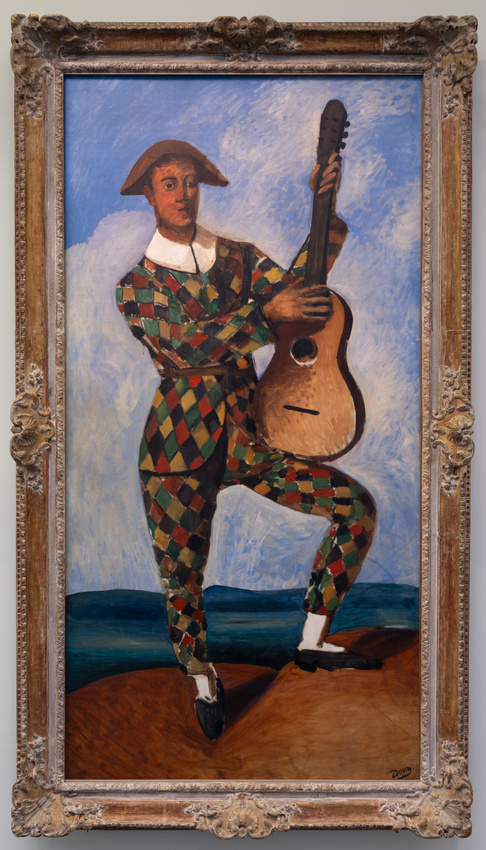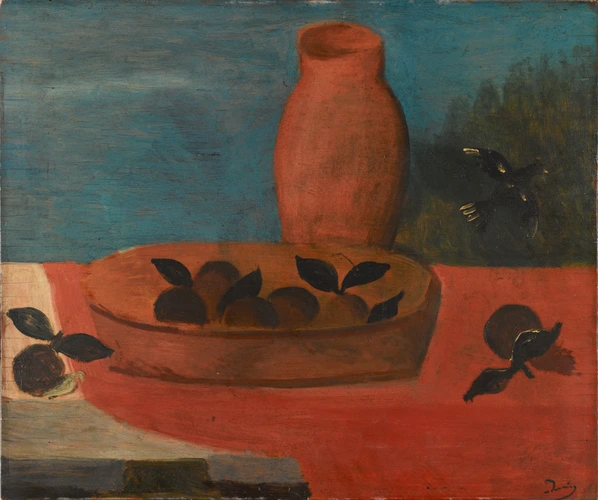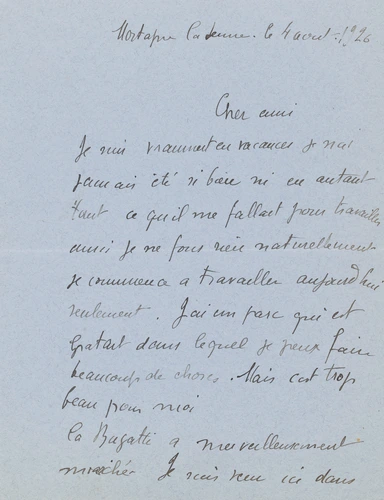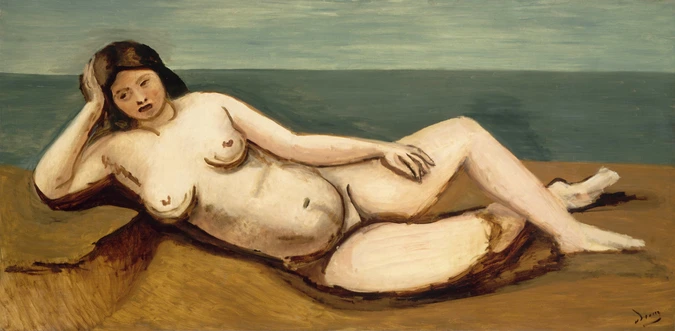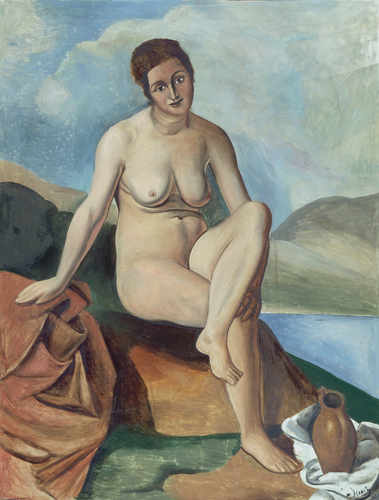Arlequin à la guitare
Here Derain has painted a life-size Harlequin, a character from the Italian Commedia dell’arte, characterised by his colourful chequered costume and bicorn hat. He is represented against a very neutral background of green and ochre. The Spanish painter Salvado, who worked for Derain and Pablo Picasso (1881-1973) posed for the character, as he did for the two figures in another of Derain's paintings, Arlequin et Pierrot [Harlequin and Pierrot], ordered by Paul Guillaume and also conserved at the Musée de l'Orangerie.
The young man is holding a guitar resting on his left leg. He seems to be listening to the sound of the chords he is playing. His gaze turned away from the viewer and his emotionless expression also impart a certain melancholy to the painting. The very timeless landscape free of any landmarks distances the Harlequin from reality and gives him a dreamy appearance. The tension between his body that is ready to dance and the instrument he would like to play is a creative discovery of Derain's. The impression of strangeness is accentuated at last by the two effects of bright light on the collar and the bright socks. Starting in 1931 this painting illustrated a book dedicated to Derain. Paul Guillaume must have liked this theme of saltimbanques, or travelling circus performers, as he acquired works by Picasso on this theme between 1905 and 1906, works he later sold, then the two Derain paintings from the Musée de l'Orangerie, conserved by Domenica.

